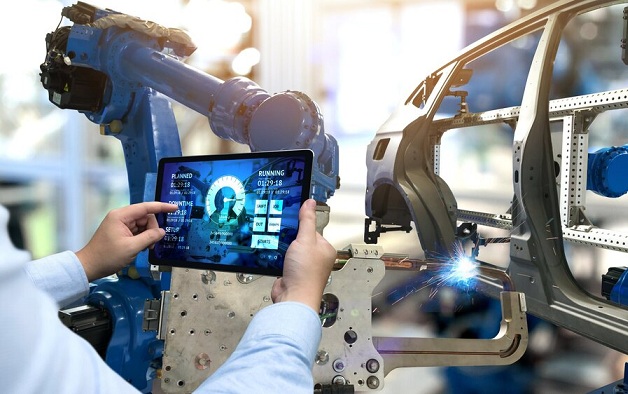Business
Predictive Maintenance Solutions for Industry 4.0

MAINTENANCE is the set of actions to maintain, sustain, repair or maintain a machine or equipment. Mainly, the care and repairs carried out in certain periods of time. Thus, ensuring the correct and proper functioning of equipment, for example.
At some point, every company needs to intervene in the operation of the equipment. Mainly to keep your process efficient. In this sense, it guarantees the reliability of assets.
In addition, no manager or person in charge of a productive sector wants their equipment to stop. This will represent financial loss and loss of production.
Therefore, it is important to know the best techniques and know which is the most suitable for your company.
Well that’s what you’ll see in this article. All about the concept of Industrial Maintenance . What are the main methods and their definitions.
Enjoy this full content. Go ahead and enjoy reading!
Related: Predictive Maintenance Solutions
What Is Maintenance In A Company?
Maintenance is a set of interventions to ensure the proper functioning of the equipment . With techniques to prevent loss of function or reduction in machine efficiency.
The maintenance sector in a company is responsible for ensuring the availability of assets . Thus, it is essential to take care of the capital invested in machines and tools.
In this sense, machine maintenance aims to correct defects (corrective maintenance) and, more importantly, prevent them from occurring (predictive maintenance).
What Is The Purpose Of Maintenance? Mechanics?
Above all, the aim of mechanical maintenance is to ensure maximum efficiency and asset availability at an optimal cost.
Above all, in satisfactory quality, safety and environmental protection conditions. In other words, doing what is called Asset Management.
For this, you must then:
- Optimize asset reliability;
- Ensure that equipment is always in good condition;
- Repair any machine immediately.
- Ensure the best availability for production;
- Make improvements to increase productivity;
- Ensure the operation of production equipment;
- Improve operational security;
- Train industrial maintenance personnel;
- Assist in the acquisition, installation and operation of machines;
- Contribute to the quality of the finished product;
- Ensure environmental protection.
Now that you know the concept and objectives, let’s see what types of maintenance exist?
Types Of Industrial Maintenance
Be aware that not all equipment uses the same type of maintenance. In other words, in some cases, it is more worthwhile to carry out periodic maintenance. On the other hand, in others, no.
Did you know there are 10 industrial maintenance concepts? So let’s check which ones? Enjoy and see which one is best suited for your equipment.
1. Corrective
Corrective maintenance is performed after the failure has occurred. That is, the equipment stopped working.
Therefore, your goal is to make the equipment available as quickly as possible . So that it causes the least possible productive impact.
It occurs in response to a functional defect. In this sense, it is also called reactive maintenance. However, it is the most costly method for the company. Therefore, it demands a stock of spare parts and a team available 24 hours a day.
2. Preventive
The preventive maintenance is the method for planned maintenance, regular or routine. It aims to reduce the probability of failures that lead the equipment to an unscheduled shutdown. For this, it takes into account the lifetime of the components and the hours worked. Thus, the exchange is made when the determined limit is reached.
3. Predictive
Predictive maintenance is the technique that uses data analysis tools to detect anomalies in equipment operation. That way, problems are fixed before they result in major failures.
The monitoring tools collect data in real time. After that, the data is analyzed to predict potential failures.
To clarify, it allows the maintenance frequency to be as low as possible . Thus, it avoids reactive (unplanned) maintenance. In addition, its cost-benefit is greater than the preventive one.
Some actions in predictive analytics strategy are: oil analysis and vibration analysis , for example. See more about its advantages in our article on Predictive management: what is it?
Well, so far you’ve seen the most popular concepts. However, there are other 7 that somehow follow the concepts of the first three.
4. Detective
Detective maintenance is aimed at detecting failures at an early stage. Your goal is to find small malfunctions that do not compromise the system yet. However, they can become catastrophic failures.
First and foremost, this technique allows experts to check the operating conditions of the system without taking it out of operation. In some cases to correct discrepancies. Likewise, without interrupting system operation.
Read Also: A Brief Guide to Social Media Marketing Campaigns
5. Autonomous
Autonomous maintenance is performed by operators and not maintenance technicians. Concept comes from Total Productive Maintenance (MPT).
The central idea is to give operators more responsibility. That is, allow them to perform simple and preventative tasks.
For example, lubrication , tightening of screws, cleaning and inspection of some components. In this way, the operators themselves help to avoid breakages. They can react faster if a fault is detected.
6. Total Productive
Total Productive Maintenance (MPT) is the process of using machines, equipment, employees and support processes. To maintain and improve the integrity and quality of production systems.
In this way, MPT involves employees in the maintenance of their own equipment. In addition, it emphasizes proactive and preventive maintenance techniques. Aims for a perfect production, free from breakdowns, stoppages and accidents.
First and foremost, MPT’s main objective is to improve productivity by reducing downtime. Thus, implementing this program greatly improves the overall effectiveness of the equipment.
7. Break
Breakdown maintenance is done when there is total equipment failure. That is, it is not programmed in advance. In this sense, it is performed when the equipment or component breaks down.
However, companies need to have resources always ready for the moment when failure occurs. Thus, the main candidates for this strategy are components that are easy to replace. First of all, they don’t compromise the safety of the staff.
This strategy is common in cheaper and secondary production equipment.
8. Stop
A shutdown maintenance ( also called shutdown ) is the action in which a plant, or entire process unit, is taken out of service to perform specific maintenance tasks.
However, the interval between these stops is months or even more than a year. Therefore, as long as possible should be used between stops because shutdown stops production.
Industrial Maintenance 4.0
The term industry 4.0 refers to the digital transformation of the industry. In other words, machines form an intelligent network with the help of new communication technologies.
Read Also: MCO to Port Canaveral; get from MCO to Port Canaveral
The equipment now has more modern control systems. With internet connection, or IoT ( Internet of Things, in English).
This technological leap should be put to good use. Mainly by the maintenance sector of industries. Industrial Maintenance 4.0 takes advantage of this machine-to-machine communication to capture real-time data. In this way, allow maintenance actions to be carried out in an optimized way.
Equipment monitoring in Industry 4.0 should be done by an asset management center . It gathers all the data collected on the machines. Bringing data together in one place makes decision-making easier and faster.




![[pii_email_4c910535350b5a41ee81] Error Code Resolved](https://wigily.com/wp-content/uploads/2020/09/pii_email_4c910535350b5a41ee81-Error-Code-Resolved.jpg)
